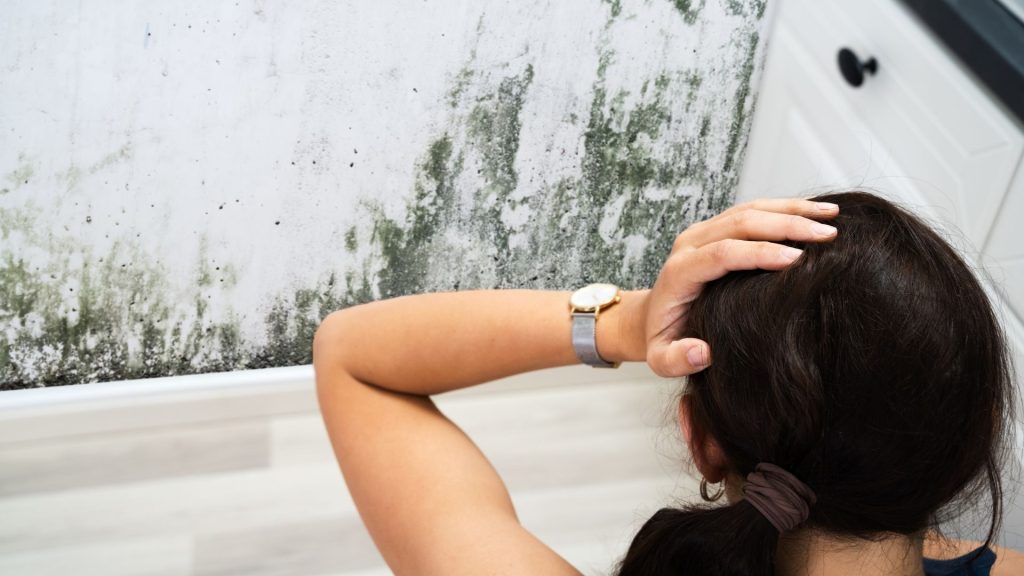From your own space, to the ability to accrue equity year over year, homeownership certainly has its perks, doesn’t it? But, if we’re being honest, there are some less-than-glamorous aspects that come along with being a homeowner, too.
Just this past weekend, one of the House Hacks Tips staff members found that out firsthand when she discovered what she first thought to be specks of dirt in her shower. After careful inspection and a home test, she found the underlying culprit: mold.
While it can sound kind of gross, mold isn’t an uncommon problem for homeowners. In fact, a recent statistic shows that about 70% of homes have mold – a shockingly overwhelming percentage. Whatsmore, mold isn’t just an ugly inconvenience – it can be costly to fix, not to mention detrimental to your health (and those living in your home with you).
So how can you protect your home and health from a mold infestation? After our staff members’ weekend discovery, she did the research so you don’t have to. Read on to learn how mold starts, and what you can do to prevent it from overtaking your home.
Why is Mold a Threat?
Mold is a form of fungus. And while there are many different types, mold can grow both indoors and outdoors. As part of this growth process, mold produces spores, which are invisible to the naked eye and spread by floating around in the air. These spores thrive in moist, warm environments, so when they finally land on a damp spot, they cling on and begin to grow. As you can imagine, this makes bathrooms, house vents, and wet areas after a flood a breeding ground for spores to flourish.
As spores grow, they produce allergens, irritants, and mycotoxins that can be toxic. These toxins can trigger the production of microbes and bacteria, making for an extremely unhealthy environment. And this doesn’t just have the ability to make you and your family sick; mold growth can weaken your walls, ceilings and floors, leading to expensive renovations or risking a dip in home value the longer you put off a fix or cleanup.
How to Tell if You Have a Mold Problem
Mold growth is usually visible (commonly on tile, cardboard, or ceilings) and often produces a musty odor.
But, if you can’t physically see the mold, a constant stuffy nose and new allergies could also indicate a mold problem. That’s because Mold is known to cause allergic reactions for those touching or inhaling it, and, in severe cases, can even cause shortness of breath.
To confirm your suspicions, you can hire a mold inspection company, or purchase an at-home mold kit to test your air and check for mold growth that may not yet be visible to you.
How to Tackle a Mold Problem
If you want to prevent mold as best as you can, the key is ensuring you don’t have a hospitable spot for spores to grow. This means keeping water and humidity to a minimum, and wiping down common wet areas – like your shower tiles and any leaks – regularly with bleach and/or vinegar.
You can also invest in a dehumidifier to remove excess moisture from your home’s air, and be sure to reseal bathroom grout lines every year to help further waterproof your walls and floors.
If you already have mold in your home, there are ways to get rid of it before the growth turns into unavoidable, expensive repairs. Spray a half-bleach half-water solution, or undiluted white vinegar, directly on the mold and do not rinse it off so it has time to tackle the mold. And, if you have mold growing on fabric or a shower lining, you can put it directly into the washing machine on a hot-water setting with bleach.
While mold is common and can be somewhat simple to combat, keep in mind that if you’ve spotted mold growing in more than a few spots throughout your home, it could be a sign of a bigger problem. If the area covers more than a 2 x 2 foot area, you’ll want to call in a pro to have it removed safely.



Excellent article. Going through mold remediation now after Hurricane Ian.